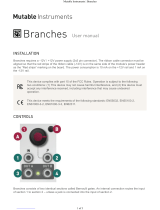
Statistics Table Name in SNMPMIB that Gathers the StatisticStatistics Type
cfprComputeMbPowerStatsTable—Provides
all motherboard power statistics for every
security module.
cfprComputeMbTempStatsTable—Provides
all motherboard temperature statistics for
every security module.
CISCO-FIREPOWER-COMPUTE-MIB
.1.3.6.1.4.1.9.9.826.1.12 is the parent
OID where the key statistics reside.
Blade and rack level
cfprProcessorEnvStatsTable—Provides
all CPU power and temperature statistics
for every CPU socket.
CISCO-FIREPOWER-PROCESSOR-MIB
.1.3.6.1.4.1.9.9.826.1.66 is the parent
OID where the key statistics reside.
Processor
cfprEquipmentFanStatsTable—Provides
all statistics for every physical fan.
cfprEquipmentFanModuleStatsTable—Provides
all fan module temperature statistics for
every fan module.
cfprEquipmentChassisStatsTable—Provides
all chassis level temperature statistics.
cfprEquipmentPsuStatsTable—Provides
all chassis level power and temperature
statistics for every power supply.
cfprEquipmentIOCardStatsTable—Provides
all chassis level power and temperature
statistics for the fabric interconnect.
CISCO-FIREPOWER-EQUIPMENT-MIB
.1.3.6.1.4.1.9.9.826.1.20 is the parent
OID where the key statistics reside.
Equipment
cfprMemoryUnitEnvStatsTable—Provides
all memory DIMM temperature statistics
for every memory module.
CISCO-FIREPOWER-MEMORY-MIB
.1.3.6.1.4.1.9.9.826.1.50 is the parent
OID where the key statistics reside.
Memory statistics
cfprSwEnvStatsTable—Provides
configuration and status information on
the switch configuration.
CISCO-FIREPOWER-SW-MIB
.1.3.6.1.4.1.9.9.826.1.75 is the parent
OID where the key statistics reside.
Switching statistics
cfprSmMonitorTable—Provides disk,
CPU, and memory utilization statistics for
each security module.
CISCO-FIREPOWER-SM-MIB
.1.3.6.1.4.1.9.9.826.1.71 is the parent
OID where key security-module
statistics reside.
Security Module
statistics
cfprStorageItemTable—Provides
storage element statistics.
CISCO-FIREPOWER-STORAGE-MIB
.1.3.6.1.4.1.9.9.826.1.74.20 is the parent
OID where storage statistics reside.
Storage statistics
Cisco Firepower 4100/9300 FXOS MIB Reference Guide
6
About Cisco FXOS MIB Files
Gathering Statistics




















